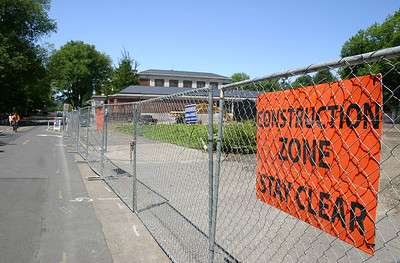The State of Kansas has a problem with its community colleges. It is the same problem that the other forty-nine states have: enrollment. As is often the case, one problem begets another. In this case, falling enrollment – if you believe the administrators – prevents them from addressing neglected maintenance.
There is no way around the numbers: in the last 10 years, enrollment has declined by 30% at community colleges statewide. The numbers do not lie, but they also do not tell the full story. Part of the reason the enrollment decline is so severe is that community college enrollment swelled during the Great Recession. Even without the pandemic, it would be hard to sustain the historic enrollment figures community colleges enjoyed in the years following that crash.
That does not make the current situation any more palatable. The campuses, which are independent of each other and of the state, are crumbling at just the wrong time.
There is nothing unique about Kansas or its community colleges. While many states have two-year colleges that have seen their own century mark, most community colleges opened in the mid-to-late 1960’s. College buildings have a life expectancy of about 60 years, so the oldest sections of these campuses are approaching end-of-life.
It does not help that an overwhelming number of higher education institutions have neglected maintenance on their critical infrastructure. Conservatively, experts estimate the cost of neglected maintenance on campuses at $100 per square foot. In 2015, the estimated value of outstanding maintenance on higher education campuses exceeded $1T. Despite the chronic inability or unwillingness to maintain campus facilities, colleges and universities keep building.
Neglected maintenance does not stop new construction
In a 2021 Tradeline survey of 115 US colleges and universities, 60% reported that they had at least two major construction projects in the pre-planning or planning stages. More than one-third reported that they had at least two construction projects underway.
Campus construction is a significant driver of the cost of post-secondary education. And while neglected maintenance is a massive liability (as WCC’s Raw Sewage Fountain has demonstrated), it does not show up on the institution’s annual balance sheet. Its invisibility makes it easy to ignore and allows administrations to hire 13 Vice Presidents and build brand new buildings, even as the existing facilities on campus crumble.
Putting an always-current number on the liability is one way to recognize the constant decay of campus facilities. Giving each building separate maintenance and capital funds is another. Board policies that demand executive accountability for the upkeep of the campus are yet another.
Do not get me wrong: setting aside money for neglected maintenance is a step in the right direction. But giving neglect an annual budget does not capture the actual size of the liability. And given the cost of remediating neglect, approving an annual maintenance budget of just $300,000 for WCC’s campus is reckless.
The WCC Board of Trustees will not hold the President fully accountable for the condition of the facilities. Nor are they inclined to reject requests to construct new facilities on campus – despite the distinct lack of need. Therefore, the taxpayers must hold the Board of Trustees fully accountable for overlooking every infrastructure failure on campus. They must explain their failure to demand proper budgeting that would avoid neglect in the first place.
The WCC Trustees have the authority to do this. They simply choose not to.
Photo Credit: Oregon State University, via Flickr






















